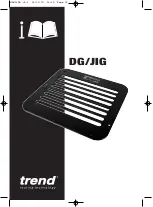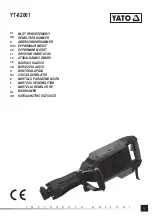
Plunge or Interior Cuts
The size and versatility of the Dremel
US20V make it an excellent option for
making plunge or interior cuts into a
workpiece such as flooring, paneling, or
siding.
1.
Mark the surface to be cut with the
desired cut lines
2.
Loosen the depth adjustment lever so
that the spring loaded foot releases
and goes to the zero depth setting.
Leave the depth adjustment lever
loose during this cut.
3.
Rest the foot
1
of the tool on the
workpieces and. Align the tool’s
wheel with the cut line (Fig. 10).
4.
While holding the tool firmly, press
the paddle switch
8
and allow the
tool’s wheel to come up to full speed.
5.
Slowly plunge/lower the tool and
wheel into the workpiece (Fig. 11).
6.
Guide the tool forward and complete
the cut
7.
Release the paddle switch and allow
the tool to come to a complete stop.
8.
Remove the tool from the workpiece.
9.
Repeat steps 3–8 as required to
complete your cuts.
Flush Cutting
First, consider the desired height of the
flush cut. For flooring installation, add
u p t h e t h i c k n e s s o f y o u r f l o o r i n g
adhesive, the flooring itself, and any
underlayments or other material that
will add to the thickness of the finished
floor (Fig. 12).
1.
Install the flush cutting wheel on the
tool as described in “Flush Cutting
Wheel Assembly”, page 15.
2.
Adjust the depth of the wheel to the
desired depth setting.
3.
Turn the tool on it’s side so that the
Flush cut foot rests against the
flooring.
4.
Firmly grip the tool. Turn tool on and
allow it to come to full speed before
entering workpiece.
5.
Complete your cut and remove the
tool from the workpiece before
turning the tool off.
Cutting Large Sheets
When making cuts longer than 2 feet
(0.6m) in material such as plywood, tool
may become hot as well as burn the
material. To avoid this, let the tool rest
in between cutting.
Large sheets and long boards sag or
bend, depending on support. If you
attempt to cut without leveling and
-19-
Operating Instructions
1
8
Fig. 10
Fig. 11
Fig. 12
















































